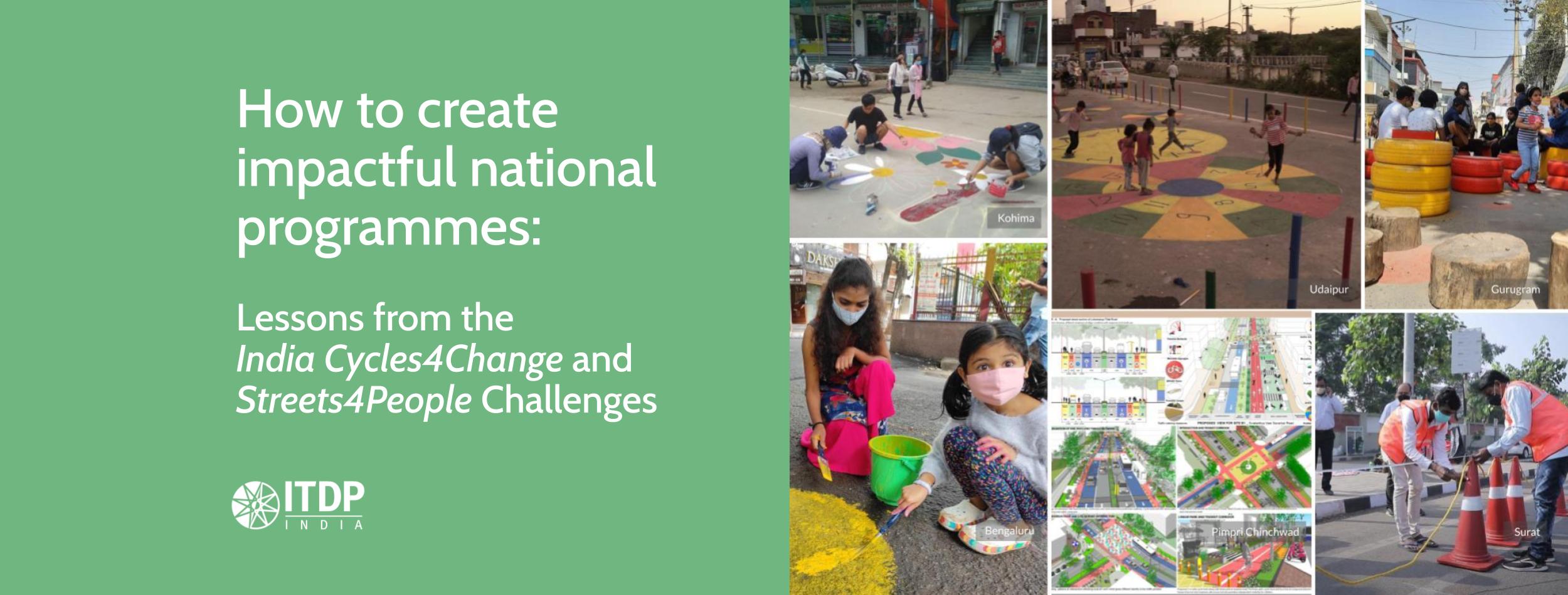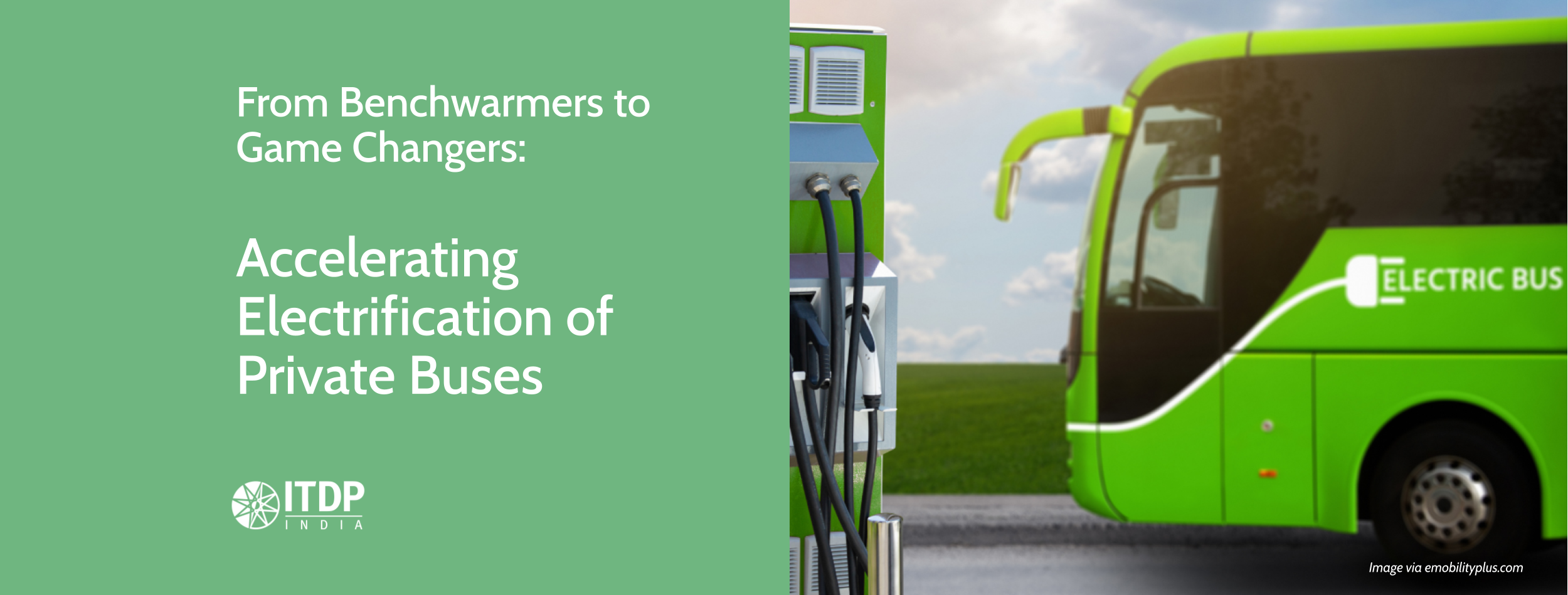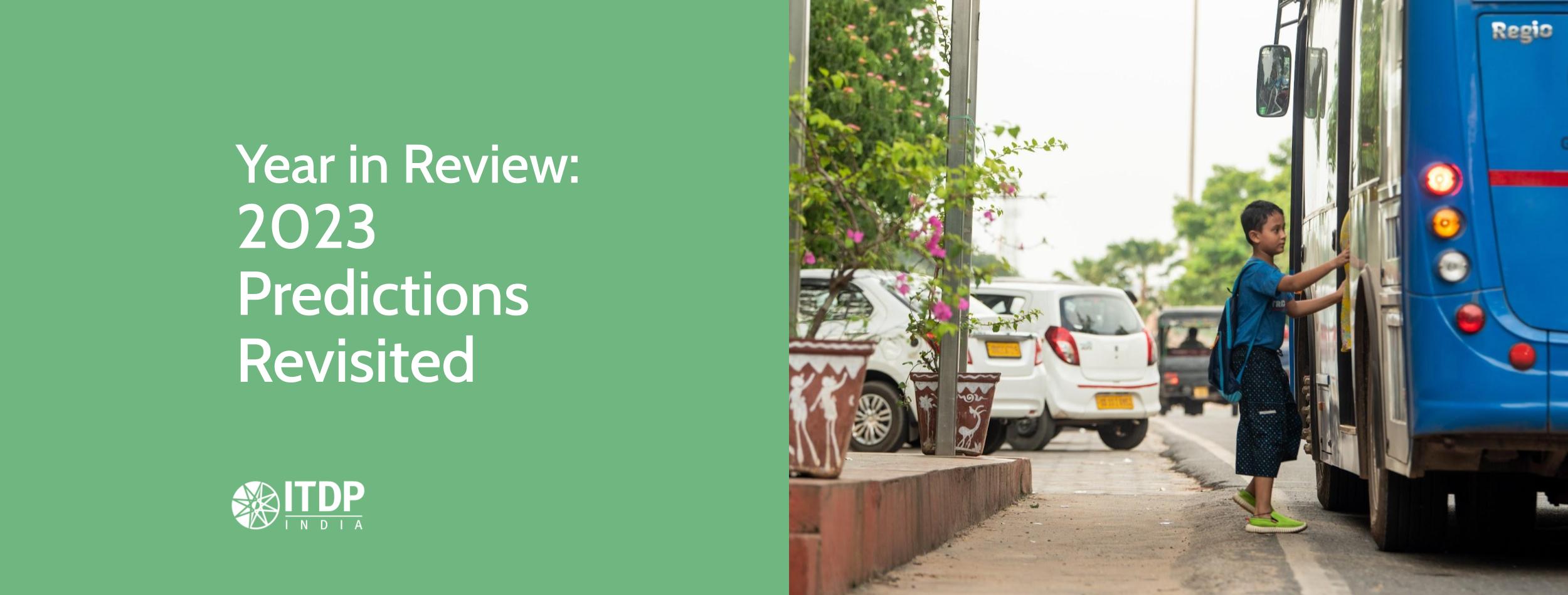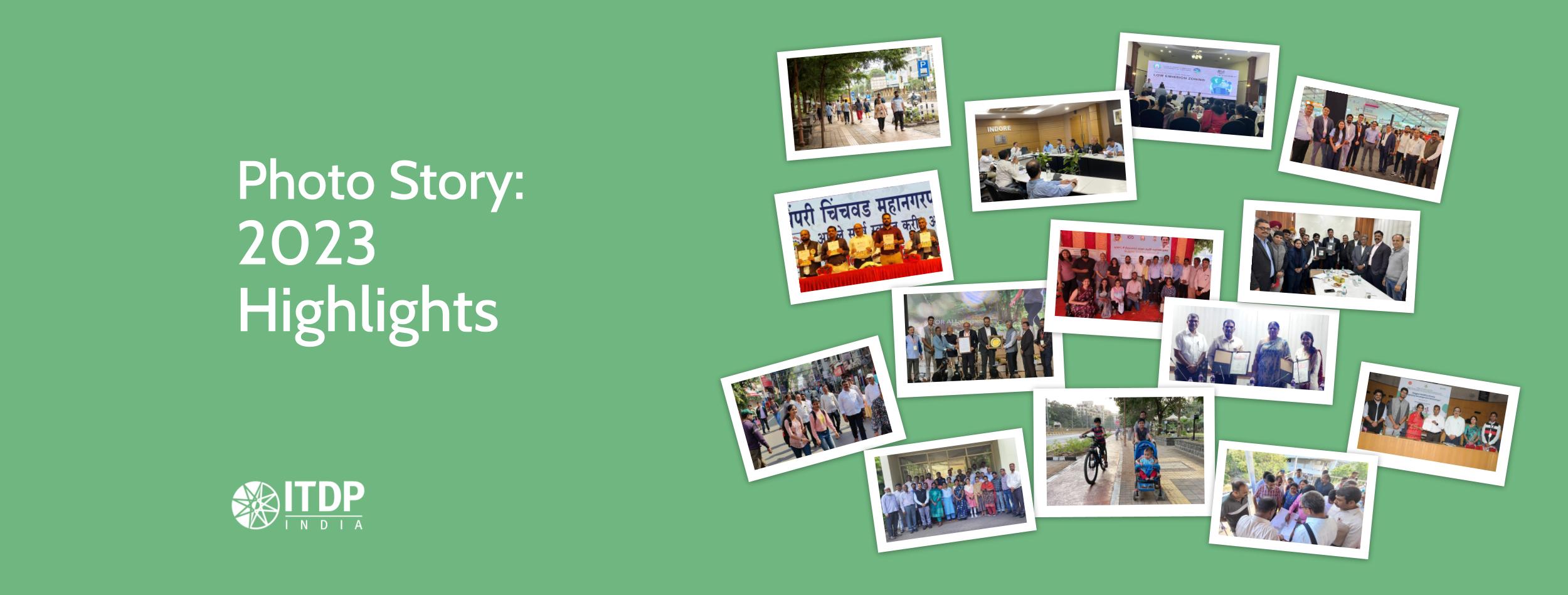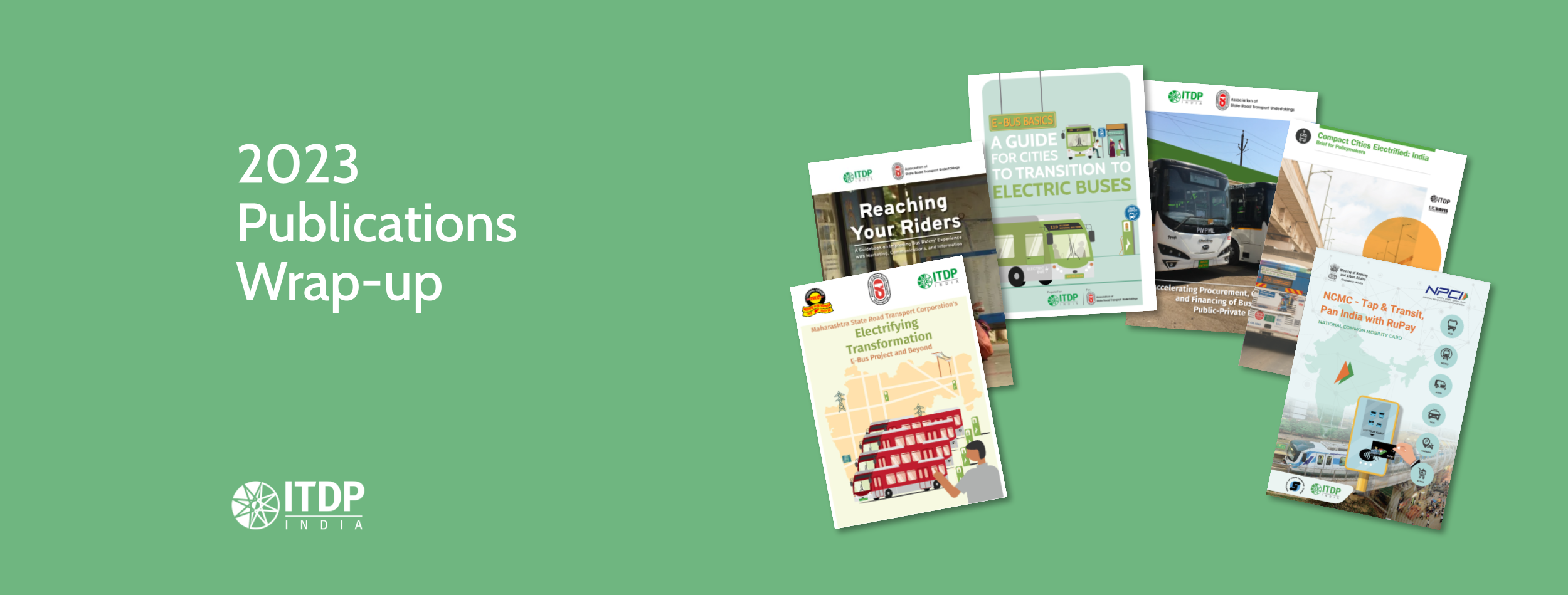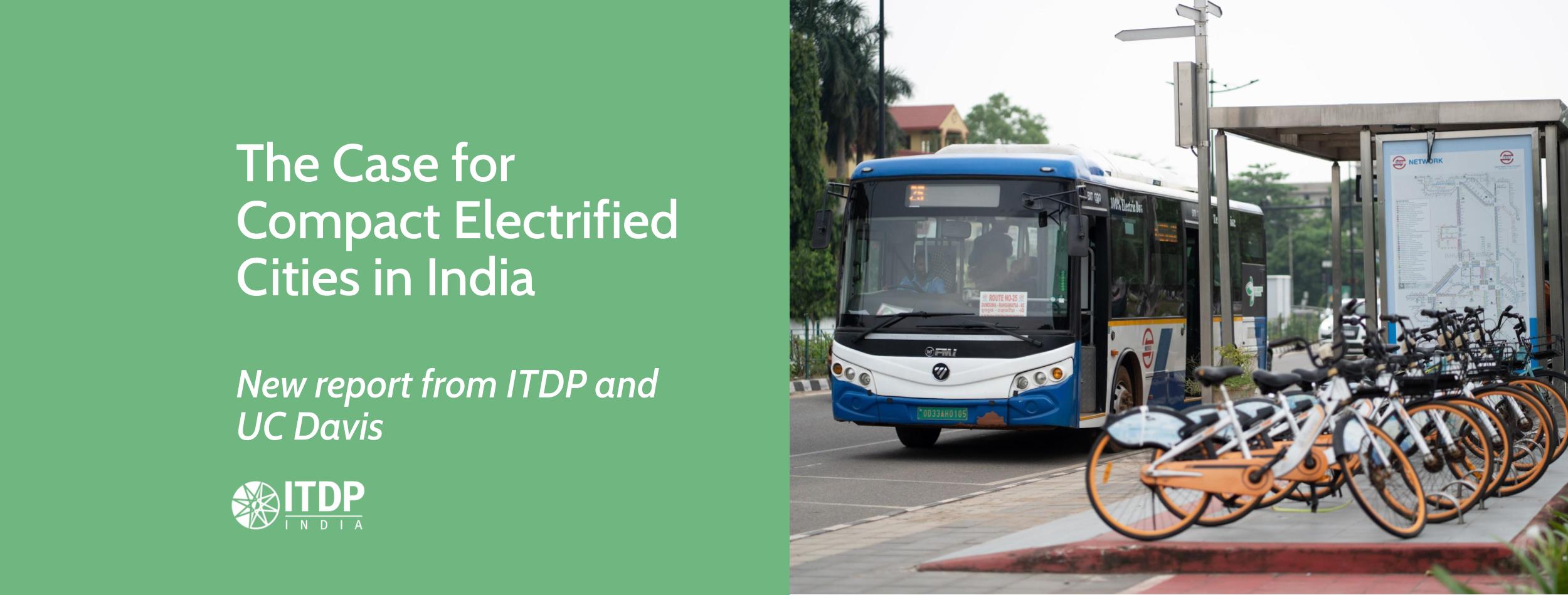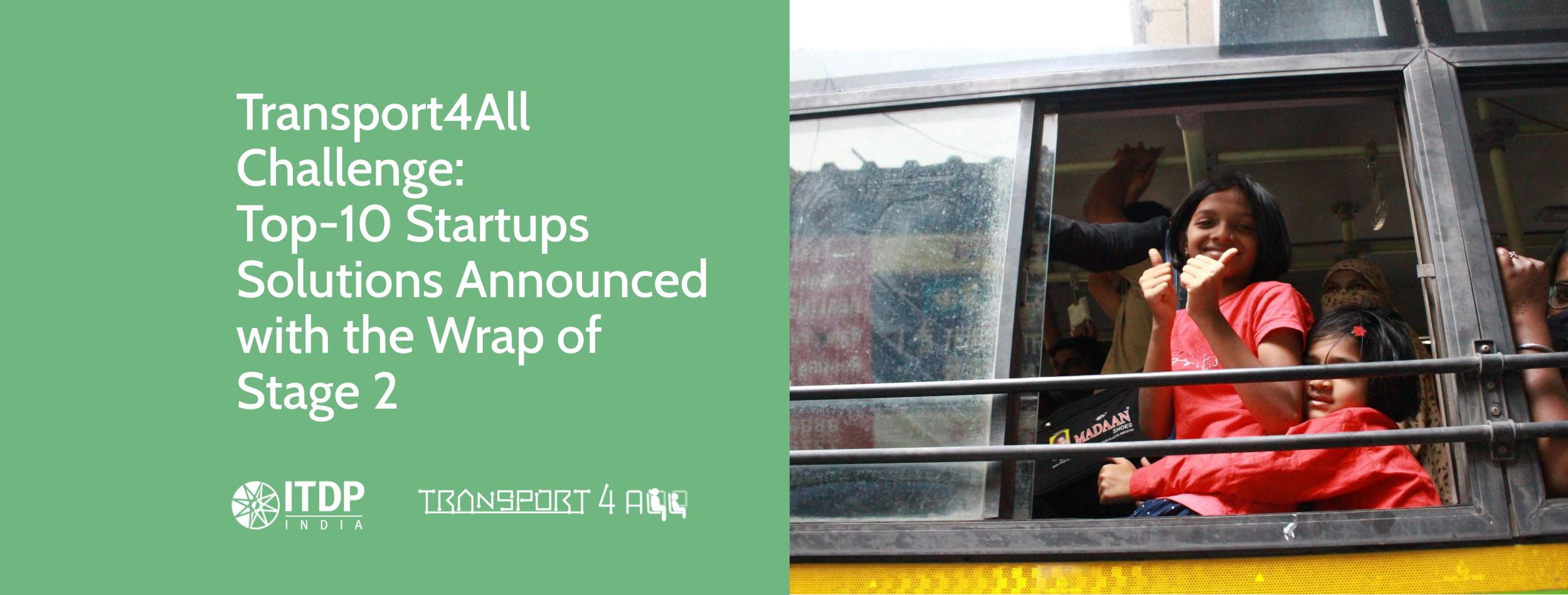Four years.
Three steps—Test, Learn, Scale.
Two national Challenges.
One mission—to support cities across India to create Healthy Streets—streets that prioritise walking, cycling, and public transport.
With the wrap-up of the India Cycles4Change and Streets4People Challenges with the Smart Cities Mission (SCM), Ministry of Housing and Urban Affairs (MoHUA) in January 2024, we look back at the origin and impact of the two programmes. We also present five key lessons from the experience which can help shape any similar efforts to transform our cities at scale.
Let’s go back to where it all began.
When the COVID-19 pandemic hit, all our lives turned upside down, and people HAD to adapt to survive. Amidst this chaos and uncertainty, we noticed something remarkable—people flocked to the streets to escape the four walls of their homes. Not only were they reclaiming their streets for fun and socialising, but people were now walking and cycling to access essential goods and services!
And that got us thinking—can we use this moment to get cities to create people-centric streets that could enable healthy lifestyles, and pave the way for a green recovery from the pandemic?
The birth of the Challenges and its impact
Enter series two of the Urbanlogue webinars, launched by ITDP India in collaboration with the SCM, to provide expertise and spur conversations on best practices for travel and health in a post-COVID era. Over 5500 city officials attended these sessions to understand topics including COVID-safe public transport solutions, the need for street interventions to expand space for cycling and walking, and digital innovations for formal and informal public transport.

But talking wasn’t enough. We needed to see on-ground action. And so, the India Cycles4Change and Streets4People Challenges were born. Launched by the SCM and ITDP India, these two Challenges aimed to support cities in transforming their streets into Healthy Streets in a holistic step-by-step manner. Cities were excited about this initiative and to our pleasant surprise, we had a whopping 117 cities signing up for these Challenges! There began India’s Healthy Streets Revolution.
Fast forward four years, 15 cities have displayed exemplary efforts and innovative solutions in their Challenge journey, and emerged as the Challenge Champions! These cities pushed boundaries and implemented unique ideas across three pillars—Action (infrastructure pilots), Foundation (institutional changes like policies, committees, and cells), and Communication (campaigns, consultations, and outreach). But the true force behind the success of the Challenges—every single participating city who contributed in different ways, from small-scale ideas to large-scale implementation, doing whatever they could do given their context.

To check out the entire journey of these cities, the impressive work done by them, and their way forward, check out our recent publication ‘Transforming Lives With Healthy Streets: Unravelling The Journey Of Creating Healthy Streets In Indian Cities’
Our learnings from the process
This journey, however, brought a lot of uncertainties that our core team—a six-member team doing the technical and coordination work—had to adapt to constantly. In such moments, as Dory from the movie ‘Finding Nemo’ said, we just kept swimming, and kept our eyes on the prize—supporting cities in creating Healthy Streets!
Here’s what we learnt from the process:
- Set the right expectations – We quickly realised that a nationwide Challenge approach was an effective tool to mainstream the conversation about a topic—Healthy Streets in this case. But, when it comes to implementation, cities were at different starting points with respect to their understanding, capacity, infrastructure, ecosystem etc. So, expecting the same level of results from all of them would have been unfair. Our goal was to get city officials to understand the concepts to at least start talking about Healthy Streets and the importance of prioritising them in their cities. By calibrating the expectations, we were able to achieve this by the end of the Challenges.
- Enable the right ecosystem – No matter how great the ambition to drive change, nothing is possible without the right kind of support. We saw how committed and proactive city leaders inspired action and were instrumental in getting things done. Not just that, the cities with a network of strong local partners—civil society organisations, non-governmental organisations, resident welfare associations, Bicycle Mayors, etc—consistently surpassed expectations because of their unwavering support in driving the work forward.
- Ensure collaboration between multiple departments – Through the Challenges, we actively worked with the Municipal Corporation and Smart City Limited who took the lead in each city. Across the country, cities that stood out and implemented great infrastructure had one secret ingredient—engaging with multiple departments to ensure coordinated action and support for the project. Building the support and capacity of these various departments—including others like the Traffic Police and the Planning and Development Authority—is the only way Healthy Streets projects can be implemented holistically.
- Establish a robust data collection and monitoring system – While cities worked towards the actions expected of them through the Challenges, they faced a major gap in setting up processes for data collection and monitoring. In addition to the technical guidance and resources we provided, supporting cities was crucial—to prioritise this action, identify a nodal staff person, and build their capacity to work with data.
- Promote behaviour change – Through the Challenges, cities were introduced to the power of campaigns. Cities went all out in hosting social media campaigns, Open Street events, and other events like walkathons, cyclothons, cycle rallies, etc. to mainstream walking and cycling among the public. But this by itself is not enough to get more people cycling. While one-off events are great for garnering public support, long-term campaigns with a lens of behaviour change, like the Cycle2Work campaign initiated by some cities, are the only way to nudge people to take up walking and cycling as a mode of commute. This is also necessary to ensure the infrastructure implemented by cities are used well—infrastructure and campaigns go hand-in-hand in ensuring successful Healthy Streets initiatives.

Way Forward
We believe that the IndiaCycles4Change and Streets4People Challenges are an innovative step towards the larger vision of creating sustainable cities of the future. Cities have committed to continuing their efforts by identifying their short-term and long-term goals for the next three years, including plans to allocate budgets for Healthy Streets. We hope we can see many more cities embrace Healthy Streets and become lighthouse cities in the coming years!
Just like the Challenge cities, we also applied the TEST-LEARN-SCALE mantra in strategizing and developing the Challenges. We tested out this new format and gathered our learnings. Now, we can’t wait to strategize the next step—SCALE. We also hope that this format inspires other agencies and organisations, within the country and across the world. Stay tuned to see what comes next!
Written by Smritika Srinivasan
Edited by Keshav Suryanarayanan




